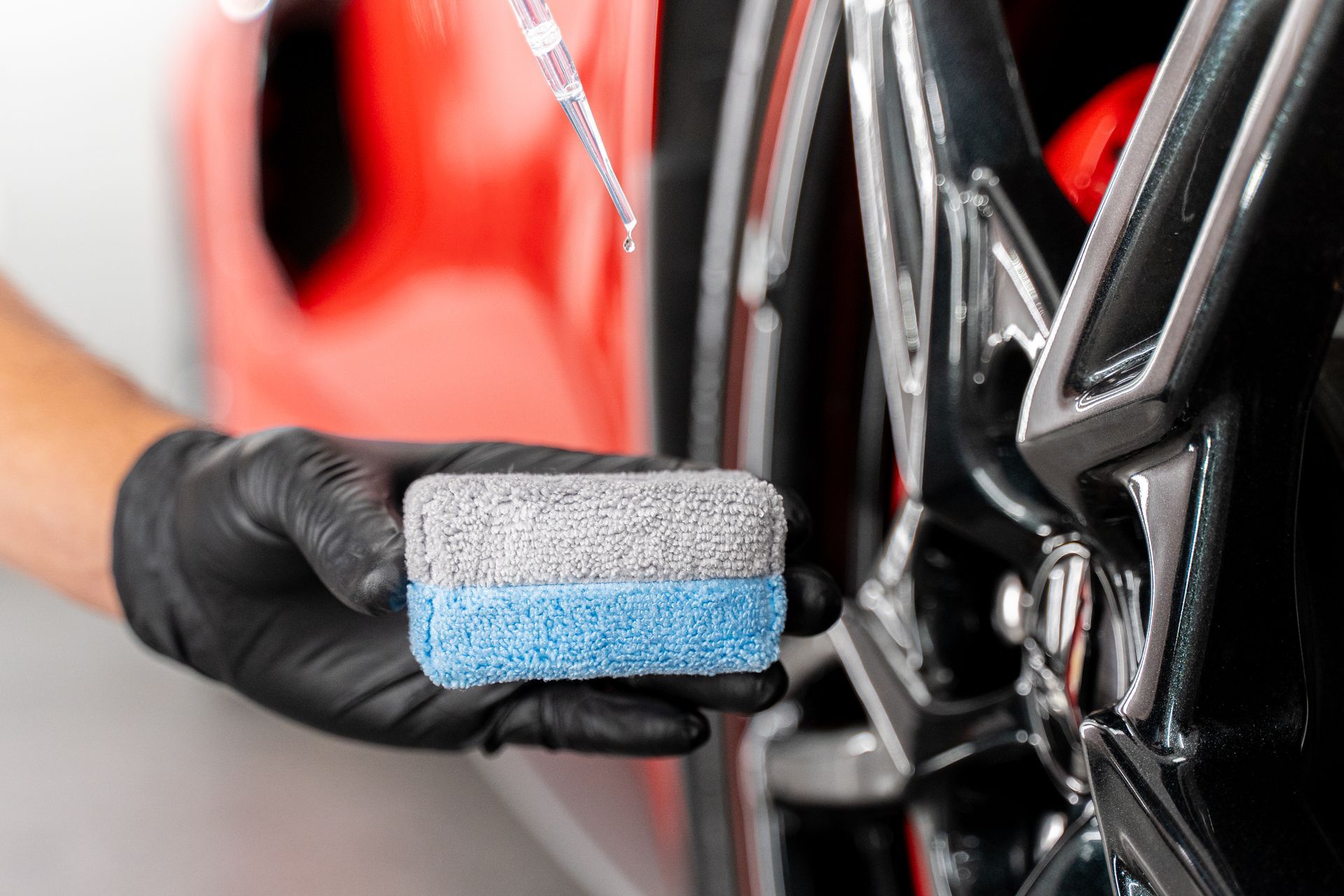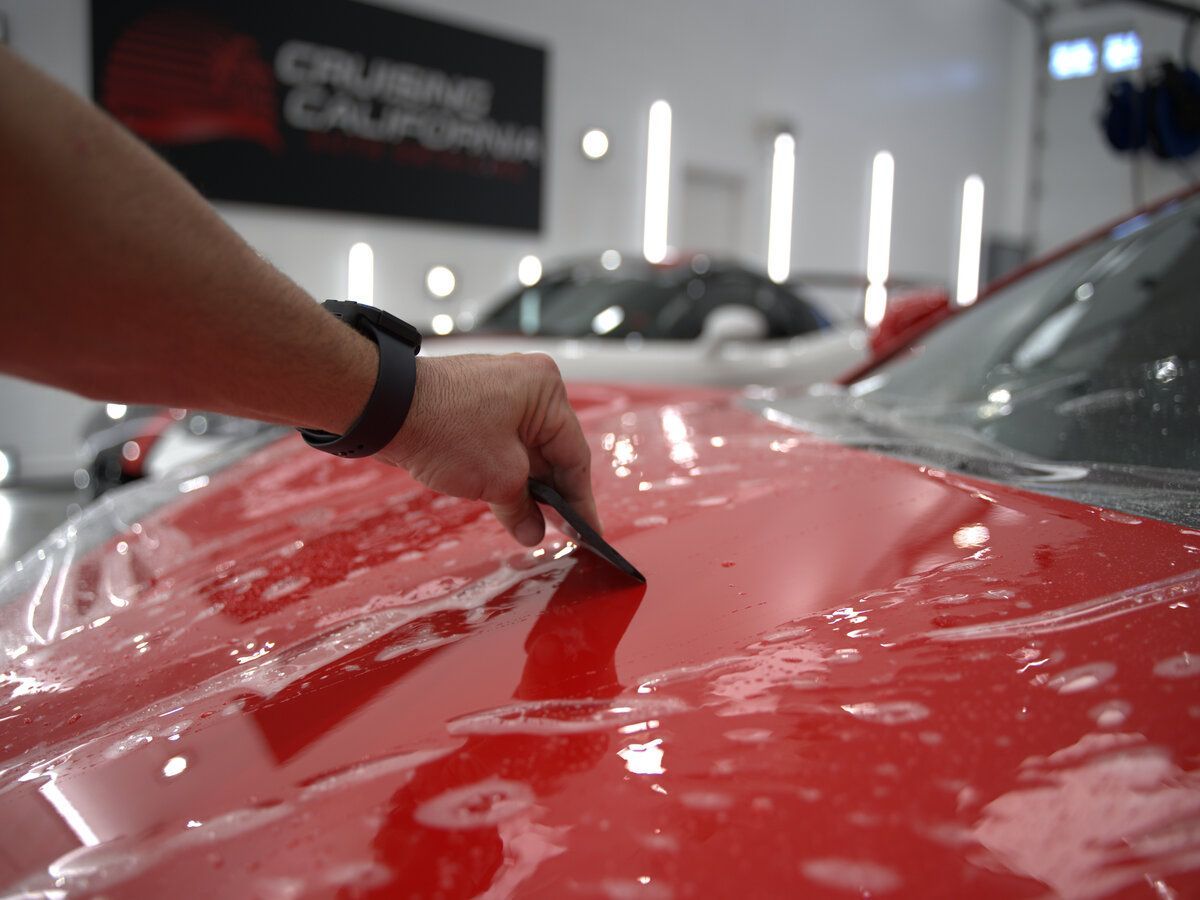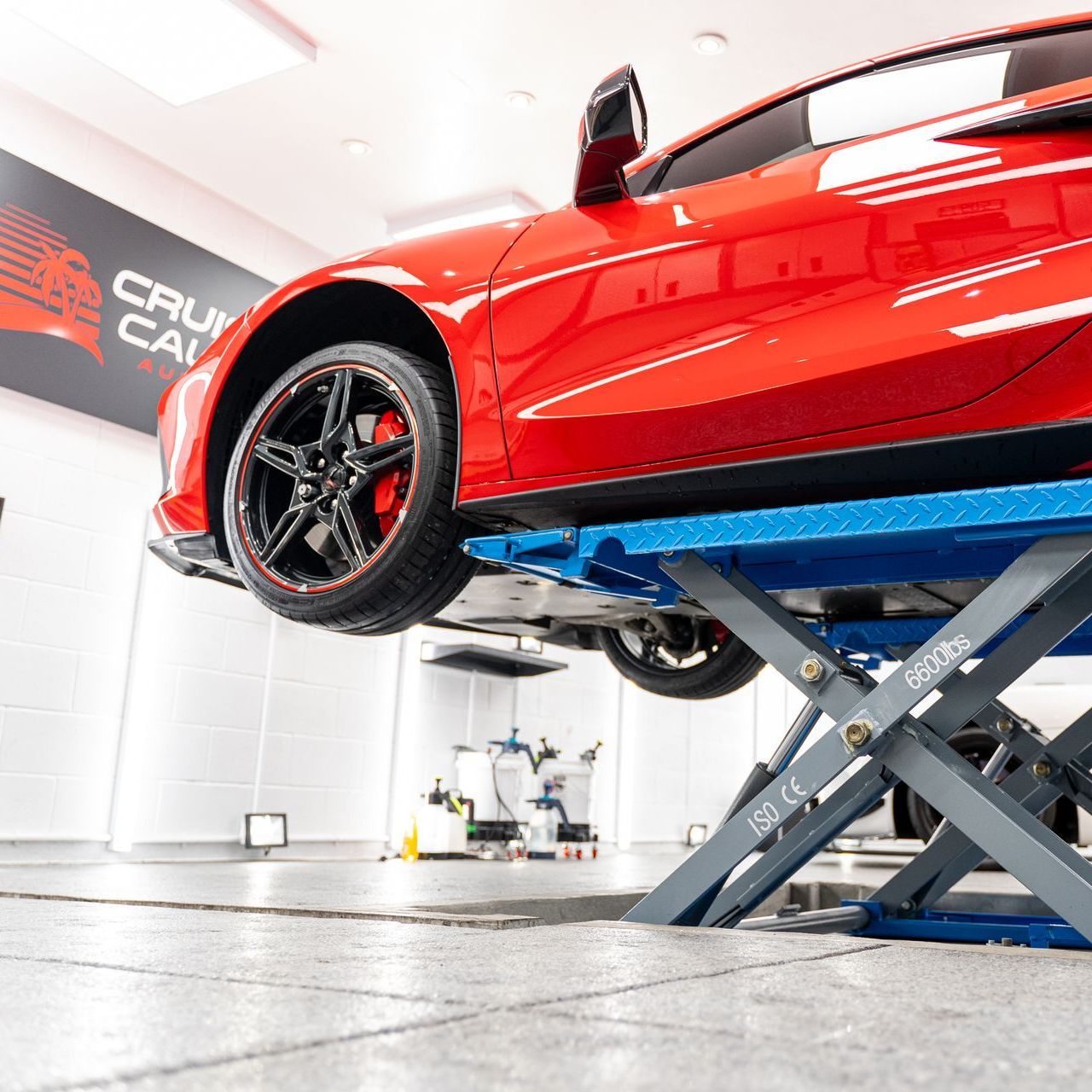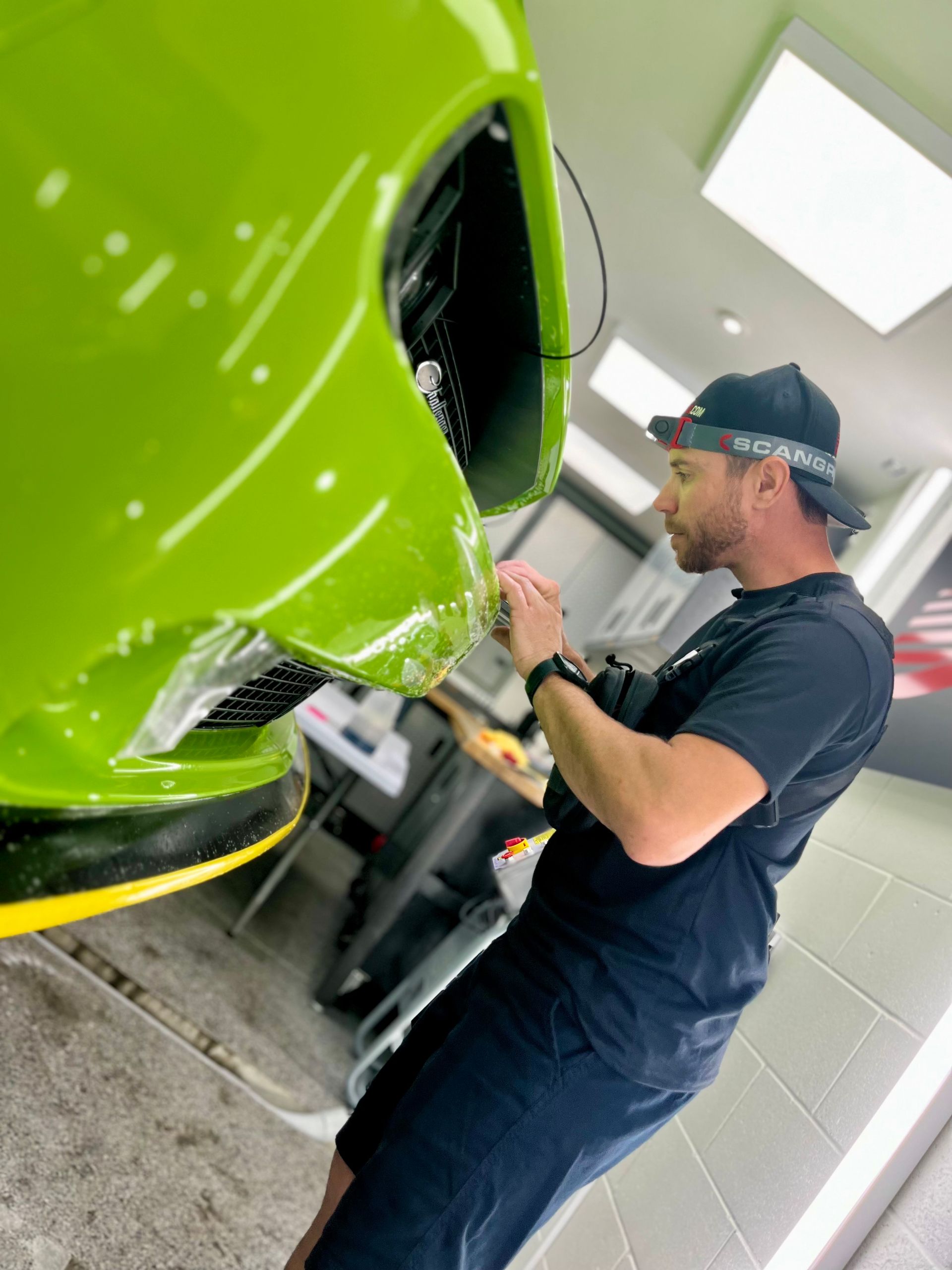Vehicle wheels face constant exposure to harsh conditions such as brake dust, road grime, salt, and various chemicals. Over time, these elements can damage the wheels’ finish, causing corrosion, staining, and premature wear. Ceramic coating for wheels has become a popular method to provide durable protection and maintain an attractive, glossy appearance. This protective layer helps prevent damage from environmental factors while reducing maintenance efforts.
What Is Ceramic Coating for Wheels?
Ceramic coating is a liquid polymer that bonds chemically to a surface, creating a hard, protective layer. When applied to wheels, ceramic coatings are specifically formulated to handle the unique challenges that wheels face. Unlike ceramic coatings designed for vehicle paint, wheel coatings must endure high temperatures generated by braking, resist brake dust buildup, and withstand exposure to corrosive substances.
The coating forms a heat-resistant and chemically durable barrier, helping wheels retain their finish and structural integrity. This specialized coating creates a smooth, non-porous surface that repels dirt, dust, and grime, making wheels easier to clean and maintain.
Key Benefits of Ceramic Coating on Wheels
Protection Against Brake Dust and Road Grime
Brake dust accumulates on wheels as brake pads wear down during normal driving. This dust can bond to wheel surfaces and become difficult to remove over time. If left untreated, it can cause discoloration and surface damage. Ceramic-coated wheels resist brake dust adhesion due to the coating’s smooth and chemically resistant surface. This reduces the frequency and intensity of cleaning required.
Road grime, which includes dirt, salt, and other debris encountered on roads, can also degrade wheel finishes. The protective ceramic layer helps shield wheels from this buildup by forming a barrier that prevents contaminants from bonding tightly to the surface.
Defense Against Corrosive Elements
Exposure to salt, moisture, and certain chemicals accelerates corrosion on wheels, especially in regions with snowy winters or coastal climates. Ceramic coatings provide a strong defense by creating an impermeable barrier against these corrosive elements. This barrier slows down the oxidation process and reduces the risk of rust and pitting, which can weaken the wheels over time.
Maintaining a Sleek, Glossy Finish
Beyond protection, ceramic coatings help maintain the aesthetic quality of wheels by preserving their gloss and preventing fading. Ultraviolet rays, oxidation, and environmental exposure typically cause untreated wheels to lose their shine and develop a dull appearance. Ceramic coatings offer resistance to these effects, allowing wheels to retain a deep, polished look with less frequent polishing or waxing.
Extending Wheel Lifespan and Vehicle Value
By protecting wheels from physical and chemical damage, ceramic coatings contribute to extending their usable lifespan. Preventing corrosion and wear can help avoid the need for costly repairs or replacement. Additionally, well-maintained wheels can positively influence a vehicle’s resale value, as potential buyers often consider wheel condition when assessing overall vehicle care.
The Ceramic Coating Application Process for Wheels
Applying ceramic coating to wheels requires thorough preparation to ensure the coating bonds properly and performs effectively. The process typically begins with an intensive cleaning phase that removes brake dust, dirt, grease, and other contaminants. This step often involves specialized cleaning products and tools to achieve a completely clean surface.
Once the wheels are cleaned and dried, the ceramic coating is applied in thin, even layers. Because wheels reach high temperatures, the coating used is formulated to withstand heat without degrading or losing its protective qualities. The coating cures over several hours to days, forming a hard, durable shell.
Proper curing is important to allow the chemical bond to fully develop, so wheels should be kept dry and clean during this period. The quality of the application process directly affects the longevity and effectiveness of the ceramic coating.
How to Maintain Your Ceramic-Coated Wheels
Ceramic-coated wheels generally require less maintenance than uncoated wheels, but regular care is still necessary to keep them in optimal condition. Cleaning with mild, pH-neutral wheel cleaners helps remove surface dirt and brake dust without harming the coating. Using abrasive brushes or harsh chemicals should be avoided, as these can degrade the coating’s protective layer.
Frequent washing, especially after driving in salt-treated or dirty conditions, helps maintain the coating’s effectiveness. Drying wheels with a soft microfiber cloth can prevent water spots and preserve the gloss. Some ceramic coatings benefit from periodic application of maintenance sprays designed to renew hydrophobic and protective properties.
By following proper maintenance routines, ceramic coated wheels can stay cleaner for longer and retain their shine over an extended period.
Why Wheel-Specific Ceramic Coatings Are Different
Ceramic coatings formulated for wheels differ from those used on painted surfaces due to the distinct environment wheels endure. Heat resistance is a critical factor, as braking generates high temperatures that can break down regular paint coatings. Wheel coatings are engineered to maintain their structural integrity and protective function even under these intense heat conditions.
In addition, wheel coatings are designed to resist chemical damage from brake dust and road salts more effectively. These coatings create a harder, more resilient surface that can tolerate the frequent abrasion and contamination wheels encounter. Understanding these differences is important when choosing protection solutions to ensure the best fit for wheel durability and appearance.
Final Thoughts on the Benefits and Maintenance of Ceramic-Coated Wheels
CCA Detailing & Ceramic Coating | PPF’s ceramic-coated wheels service provides a valuable combination of long-lasting protection and aesthetic enhancement. By forming a resilient barrier, these coatings reduce damage from brake dust, corrosive substances, and road grime while preserving the wheels’ glossy finish. The application process involves careful cleaning and precise coating to ensure durability under high heat and environmental stress.
Maintaining ceramic-coated wheels involves gentle cleaning methods and routine care to extend the life of the coating and the wheels themselves. The specialized nature of wheel ceramic coatings highlights their advantage over traditional paint coatings in meeting the demanding conditions wheels face.
For vehicle owners interested in protecting their wheels, ceramic coating offers a scientifically developed solution to maintain wheel condition, improve ease of maintenance, and potentially increase vehicle resale value.
If you want to explore ceramic coating options for your wheels or learn more about the process, contact us At CCA Detailing & Ceramic Coating | PPF, we can offer expert application and guidance based on current industry standards and product technologies.












